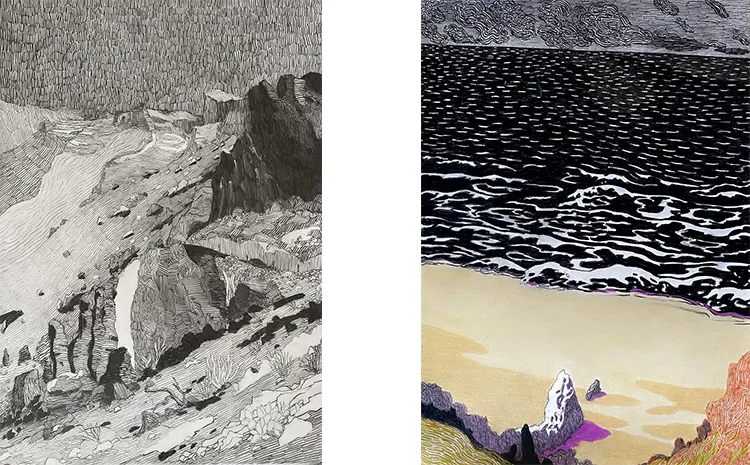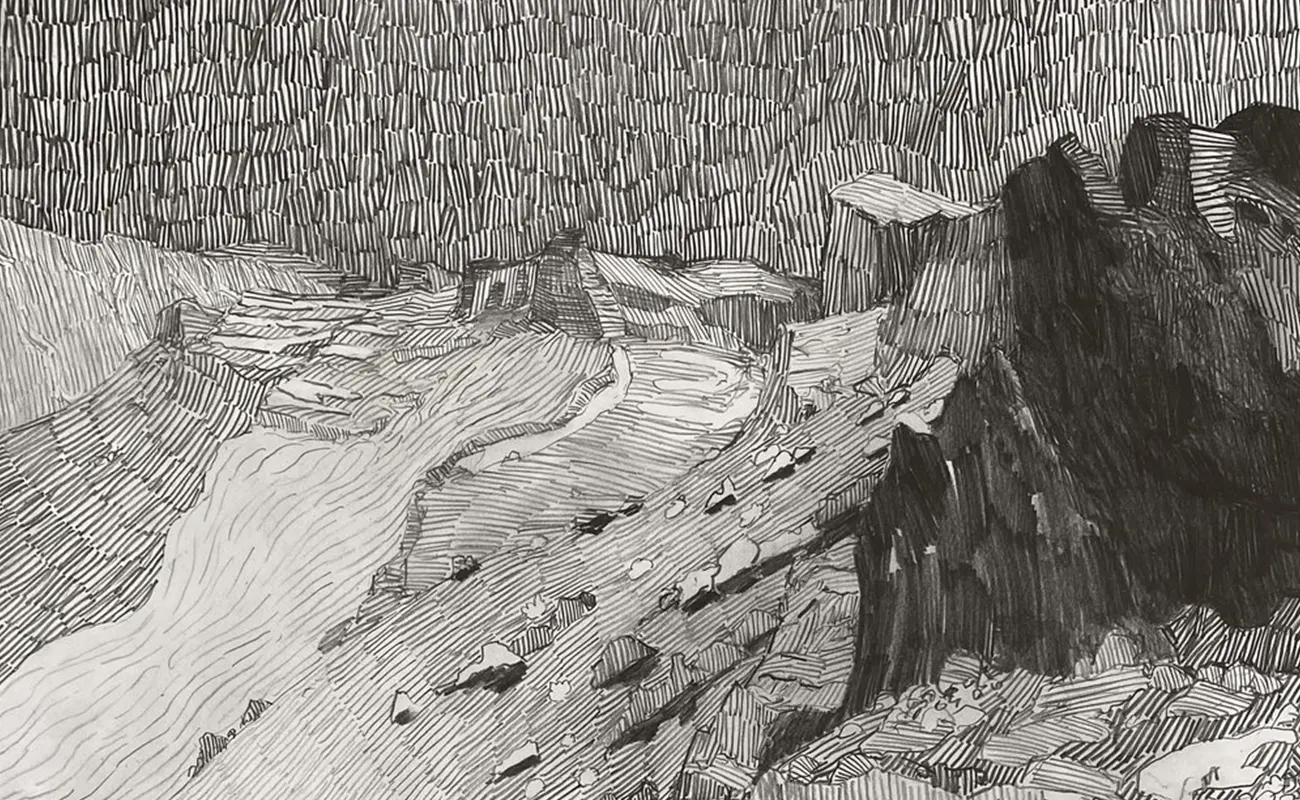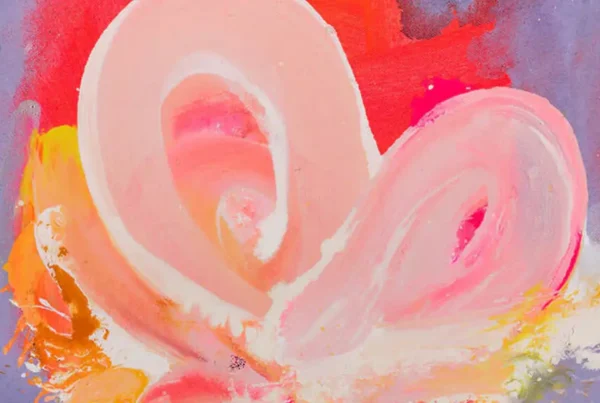“My mission in life is to try to pass a piece of myself to the world, just the way as I experienced when I saw Edvard Munch for the first time in The National Gallery in Oslo.”
A Quaint Gallery and the Birth of Per Adolfsen’s Artistic Journey
Per Adolfsen, a proficient artist hailing from Denmark, continues to reside and create in the same nation that inspired his early formative years. Throughout his childhood, he indulged in the universal pastime of drawing, much like his peers. However, it was a distinct event in his adolescence that would crystalize his path and passion for art.
The journey to self-discovery began at 13 when he attended his sister’s wedding in Norway. A fortuitous encounter with the groom-to-be, a school teacher, led Adolfsen to the heart of Oslo’s cultural landscape – The National Gallery and the Edvard Munch Museum. It was within these artistic sanctuaries that Adolfsen was introduced to the mesmerizing oeuvre of Edvard Munch.
One painting, in particular, seized Adolfsen’s young imagination – “Puberty, 1914-1916.” This depiction of a naked young girl, poised on the edge of adolescence, seemed to encapsulate a compelling blend of beauty, pain, and vulnerability. While Adolfsen was unable to fully comprehend the image’s profound depth at the time, he found himself inexorably drawn to it. In Munch’s work, he perceived a delicate portrayal of life’s fragility, beauty, and the inherent sorrow of existence.
This transformative experience stirred a revelation within Adolfsen. He was not merely a child who drew and painted, but a budding artist who found joy in his creative endeavors. As he matured, he recognized his lifelong ambition to follow in Munch’s footsteps, expressing his vision through art, potentially influencing perceptions and shaping the worldview of future generations.
From that pivotal moment at the age of 13, Adolfsen understood his life’s mission. For him, being a visual artist transcends the conventional understanding of a profession; it is an immersive lifestyle, a unique mode of perception, and a means of articulation. Thus, Per Adolfsen’s artistic journey is not simply a career but a profound commitment to living, thinking, and expressing through the universal language of art.
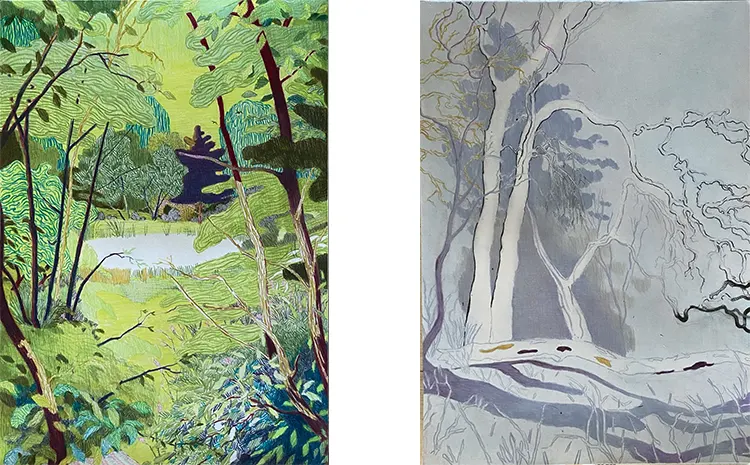
Per Adolfsen: The Banker Turned Painter
Per Adolfsen debuted as an artist in a quaint local gallery in his birthplace. This space, bound for imminent closure, presented him with an unexpected opportunity for a public display of his art. The years Adolfsen had spent dedicated to his craft in solitude, culminated in this momentous occasion, inaugurating a prolific timeline of exhibitions in Denmark, including an array of galleries and previously censored venues.
From a young age, Adolfsen communicated to his parents his unyielding aspiration to immerse himself fully in the artistic sphere, declaring it as his true vocation. This confession, however, sent ripples of concern through his father, a man of traditional disposition who envisioned a financially secure future for his son. His commanding influence led Adolfsen to an unexpected destination: a banking institution.
While he was compliant with his father’s directive, Adolfsen could not let go of his inherent passion for art. Over the subsequent years, he led a dual life – a banker by day, transforming into a committed painter by night. Every day presented an irresistible urge to create, a need as consistent as the setting sun, to bring forth new drawings and paintings.
Eventually, Adolfsen’s artistic vocation claimed its rightful place in his life, leading him to resign from his banking position. Thereafter, he devoted his full attention to his lifelong passion – visual art. This path has remained unaltered since, not so much a choice but an intrinsic part of his identity. Adolfsen seeks to convey his unique vision to the world, mirroring the profound impact he felt upon first witnessing the works of Edvard Munch in The National Gallery in Oslo.
Throughout his career, Adolfsen has indulged in diverse artistic pursuits, focusing less on maintaining a consistent style and more on capturing the nuances of his experiences. In his view, the concept of style stands as a contradiction to the fluid nature of art. Instead, he concentrates on the subjects that engage him in the present moment, often reflecting the world around him and his own inner life.
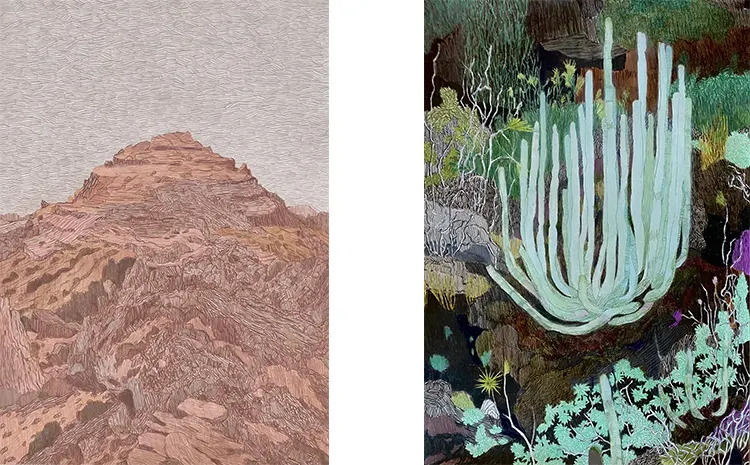
Reconnecting with Nature: Per Adolfsen’s Sketching Adventure
Three years past, Per Adolfsen revisited the exploration of landscapes, echoing the early dabblings of his youth. He found solace in the challenges and restrictions of this genre, as he believed it to be a conduit to the essence of the subject. Stepping away from his traditional painting for a time, Adolfsen embarked on a unique endeavor. He ventured into nature each day with a simple goal in mind: to create three unaided sketches of his immediate environment, without the reliance on modern tools.
Adolfsen’s journey was driven by a desire to emulate the practices of the masters who preceded him, those whose artistic legacy he acknowledges. This project was perceived as an opportunity for introspection and as a testament to his origins and identity.
Guided by the principle that ‘less is more’, he sought to pare down the elements of his craft to the absolute essentials. This reductionist approach left Adolfsen with a single piece of paper, a pencil, and a bag for storage. Thus equipped, he ventured out into the world, sketching the scenes that presented themselves.
In a conscious effort to reconnect with his past, Adolfsen revisited the locales that had previously served as subjects of his juvenile sketches. He positioned himself in the exact spots of his youthful endeavors, capturing the scenes that unfolded before him in the present. It was less about the pursuit of career advancement or the ambition of becoming a celebrated artist; instead, the focus was primarily on the act of creation itself.
What emerged as particularly fascinating to Adolfsen was how such a seemingly simple process could yield profound insight. The daily discipline of sketching from dawn till dusk enhanced his perception, enabling him to discern patterns and systems inherent in nature. This, in turn, provided him with a deeper understanding of the world’s structure and his own constitution within it, assuming one sees oneself as an integral part of nature. The humbling realization of being a small part of something vast, Adolfsen contends, is a compelling justification for this artistic approach.
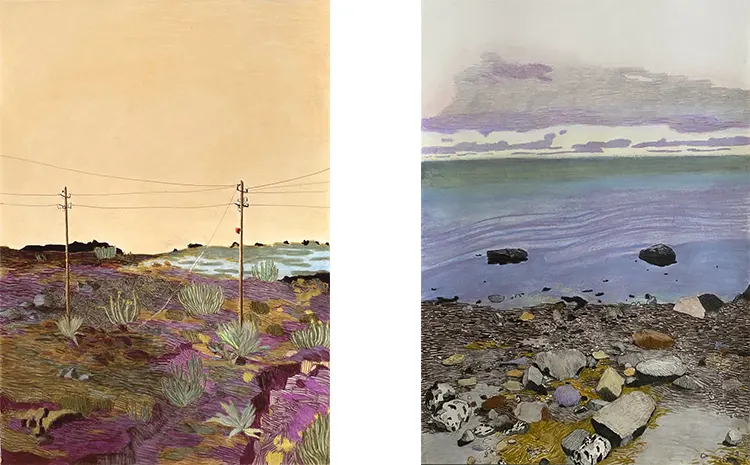
Per Adolfsen: Unveiling Beauty in Melancholy
Per Adolfsen’s introspective nature, tinged with a touch of melancholy, often facilitates his unique perception of the world around him. These darker undertones color his artistic perspective, transmuting ordinary sights into visions of unusual beauty. Adolfsen subsequently breathes life into these transformed images on his chosen canvas, driven by the patterns, emotions, and ambiance of his surroundings.
While cognizant of the trends within contemporary art, Adolfsen prefers to navigate his artistic journey with independence. He feels contemporary art is too often driven by the fleeting fashions, opinions, and trends of the era, and hence, he takes a cautious stance towards it. His artistic preference leans towards the timeless masterpieces housed within museums. These works, bearing testament to their creators’ perceptions of the world, continue to captivate and inspire him.
Adolfsen expresses profound reverence for the pioneers of art, acknowledging the countless sacrifices they made and the pieces of their souls that they imbued in their work. He appreciates that these artistic ancestors paved the way for future generations, like himself, to explore their creative potential.
The artist recounts the deep emotional impact of witnessing “der Mönch am Meer” by Caspar David Friedrich in Berlin. This encounter with Friedrich’s art moved Adolfsen to tears, eliciting feelings of existential pain. Without prior knowledge of the story behind the artwork, Adolfsen felt confusion, yet he was deeply moved by the controlled strokes and the restrained expressionism of the piece. This encounter underscored for him the profound influence that art can exert on human emotions.
Adolfsen’s creative process is a constant flurry of imaginative ideas, each potential project taking shape within his mind’s eye. He entertains dreams of various installations he aspires to create. He is unyielding in his belief that some of these dreams will manifest into reality, while others may fade away. Adolfsen’s philosophy dictates that the creative process remains an intimate journey until the artwork is ready for unveiling, only then does it become a subject of external interest.
